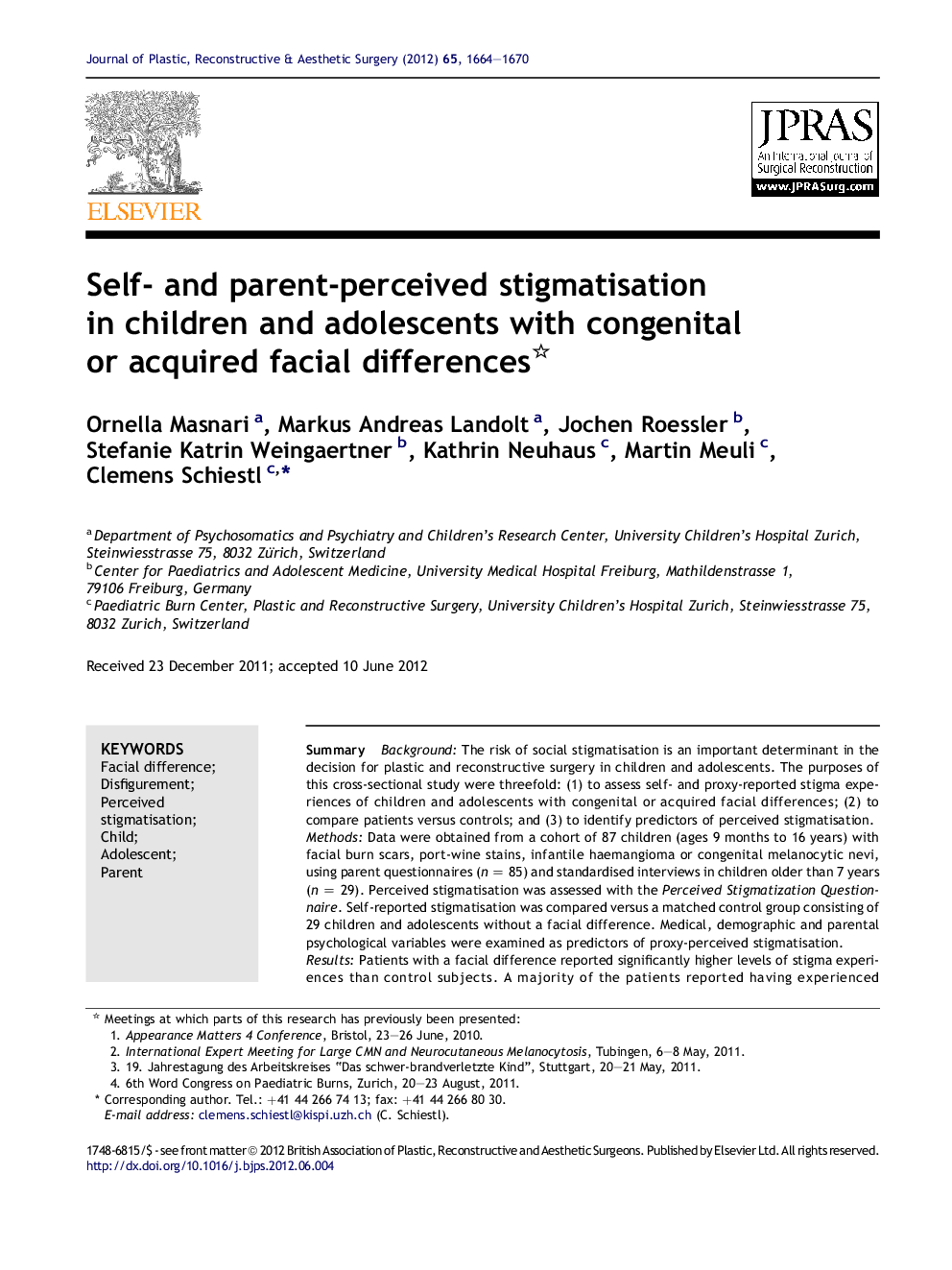| کد مقاله | کد نشریه | سال انتشار | مقاله انگلیسی | نسخه تمام متن |
|---|---|---|---|---|
| 4119078 | 1270346 | 2012 | 7 صفحه PDF | دانلود رایگان |

SummaryBackgroundThe risk of social stigmatisation is an important determinant in the decision for plastic and reconstructive surgery in children and adolescents. The purposes of this cross-sectional study were threefold: (1) to assess self- and proxy-reported stigma experiences of children and adolescents with congenital or acquired facial differences; (2) to compare patients versus controls; and (3) to identify predictors of perceived stigmatisation.MethodsData were obtained from a cohort of 87 children (ages 9 months to 16 years) with facial burn scars, port-wine stains, infantile haemangioma or congenital melanocytic nevi, using parent questionnaires (n = 85) and standardised interviews in children older than 7 years (n = 29). Perceived stigmatisation was assessed with the Perceived Stigmatization Questionnaire. Self-reported stigmatisation was compared versus a matched control group consisting of 29 children and adolescents without a facial difference. Medical, demographic and parental psychological variables were examined as predictors of proxy-perceived stigmatisation.ResultsPatients with a facial difference reported significantly higher levels of stigma experiences than control subjects. A majority of the patients reported having experienced expressions of pity, staring or startled reactions; and about one-quarter had been teased about their facial difference. Multivariate analysis indicated that proxy-perceived stigmatisation was predicted by larger size of the facial difference and greater age of the child. Gender and type of facial difference (acquired vs. congenital) had no significant impact.ConclusionsThese results demonstrate that children with a facial difference are at higher risk of experiencing stigmatisation than children without a visible difference. Children with a facial difference that covers more than 25% of their face are particularly vulnerable to stigmatisation and therefore need special monitoring.
Journal: Journal of Plastic, Reconstructive & Aesthetic Surgery - Volume 65, Issue 12, December 2012, Pages 1664–1670